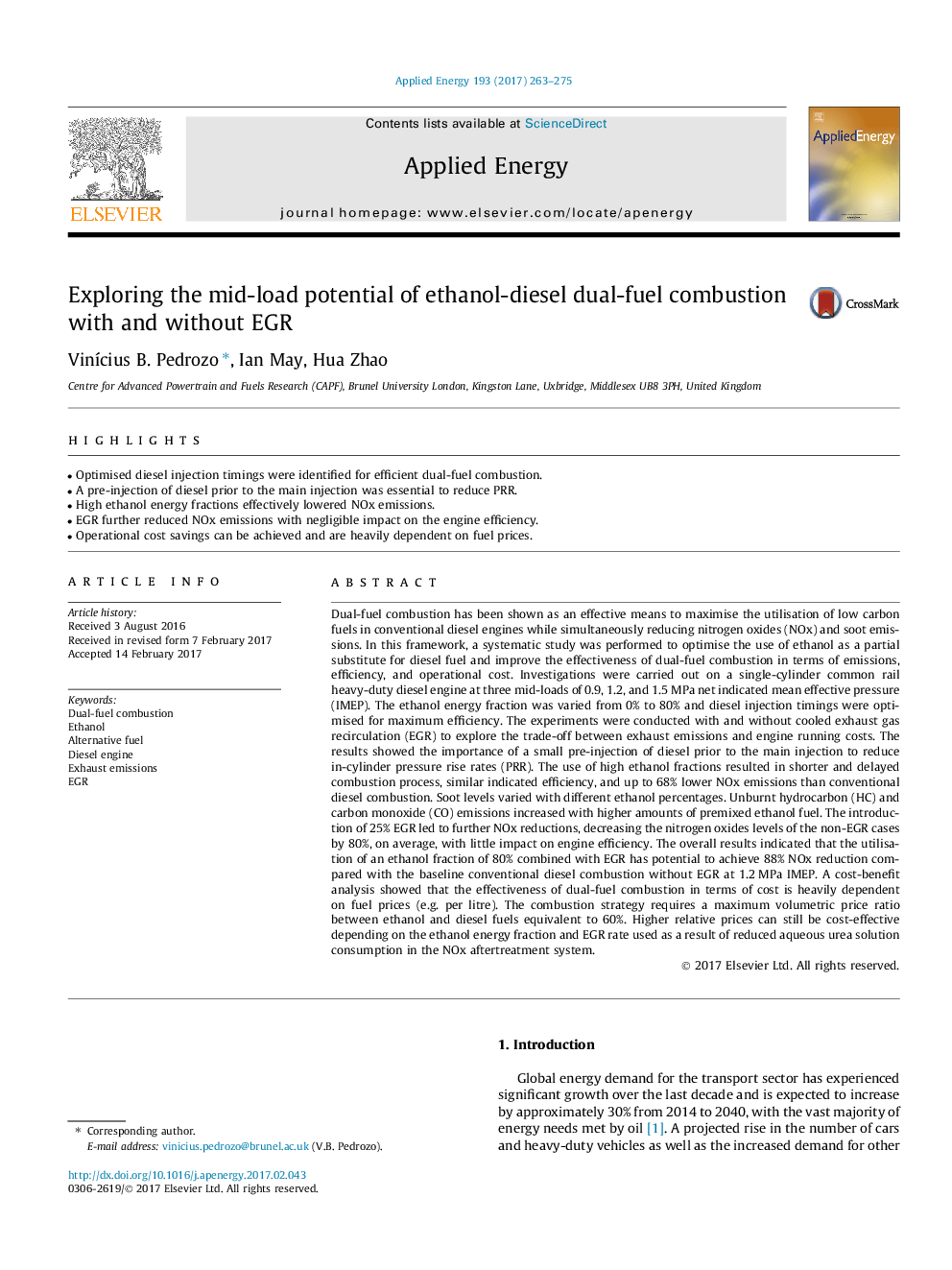| کد مقاله | کد نشریه | سال انتشار | مقاله انگلیسی | نسخه تمام متن |
|---|---|---|---|---|
| 4916300 | 1428097 | 2017 | 13 صفحه PDF | دانلود رایگان |
عنوان انگلیسی مقاله ISI
Exploring the mid-load potential of ethanol-diesel dual-fuel combustion with and without EGR
دانلود مقاله + سفارش ترجمه
دانلود مقاله ISI انگلیسی
رایگان برای ایرانیان
کلمات کلیدی
موضوعات مرتبط
مهندسی و علوم پایه
مهندسی انرژی
مهندسی انرژی و فناوری های برق
پیش نمایش صفحه اول مقاله

چکیده انگلیسی
Dual-fuel combustion has been shown as an effective means to maximise the utilisation of low carbon fuels in conventional diesel engines while simultaneously reducing nitrogen oxides (NOx) and soot emissions. In this framework, a systematic study was performed to optimise the use of ethanol as a partial substitute for diesel fuel and improve the effectiveness of dual-fuel combustion in terms of emissions, efficiency, and operational cost. Investigations were carried out on a single-cylinder common rail heavy-duty diesel engine at three mid-loads of 0.9, 1.2, and 1.5Â MPa net indicated mean effective pressure (IMEP). The ethanol energy fraction was varied from 0% to 80% and diesel injection timings were optimised for maximum efficiency. The experiments were conducted with and without cooled exhaust gas recirculation (EGR) to explore the trade-off between exhaust emissions and engine running costs. The results showed the importance of a small pre-injection of diesel prior to the main injection to reduce in-cylinder pressure rise rates (PRR). The use of high ethanol fractions resulted in shorter and delayed combustion process, similar indicated efficiency, and up to 68% lower NOx emissions than conventional diesel combustion. Soot levels varied with different ethanol percentages. Unburnt hydrocarbon (HC) and carbon monoxide (CO) emissions increased with higher amounts of premixed ethanol fuel. The introduction of 25% EGR led to further NOx reductions, decreasing the nitrogen oxides levels of the non-EGR cases by 80%, on average, with little impact on engine efficiency. The overall results indicated that the utilisation of an ethanol fraction of 80% combined with EGR has potential to achieve 88% NOx reduction compared with the baseline conventional diesel combustion without EGR at 1.2Â MPa IMEP. A cost-benefit analysis showed that the effectiveness of dual-fuel combustion in terms of cost is heavily dependent on fuel prices (e.g. per litre). The combustion strategy requires a maximum volumetric price ratio between ethanol and diesel fuels equivalent to 60%. Higher relative prices can still be cost-effective depending on the ethanol energy fraction and EGR rate used as a result of reduced aqueous urea solution consumption in the NOx aftertreatment system.
ناشر
Database: Elsevier - ScienceDirect (ساینس دایرکت)
Journal: Applied Energy - Volume 193, 1 May 2017, Pages 263-275
Journal: Applied Energy - Volume 193, 1 May 2017, Pages 263-275
نویسندگان
VinÃcius B. Pedrozo, Ian May, Hua Zhao,